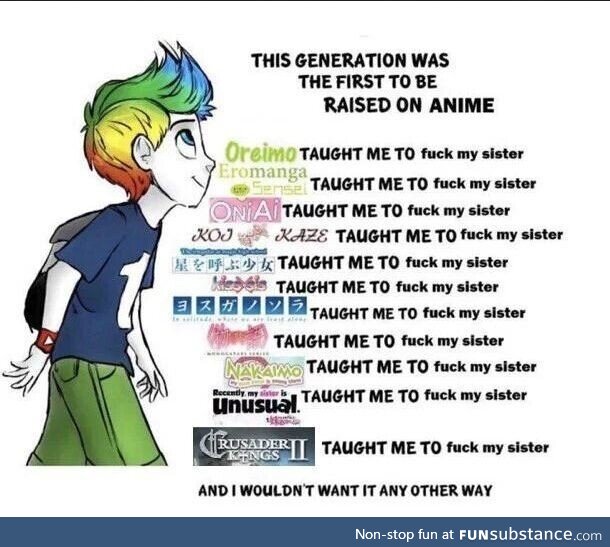Featured Posts

I wish I had a fort

The powerof positive thinking

NASA

Pray for Australia

Take care of each other

She has emerged

My soul feels so much better

I just ordered one. #Just2019HispanicThings

He really wanted his photo at the Halloween party, but was super scared of the spiders

The Only Thing More Contagious Than COVID19 Might Be This Fox's Smile
About
FAQ
Contact
Rules
Terms
Privacy
Feedback
Keyboard Shortcuts:
Previous Post · Next Post · + CTRL Skip Post
Previous Post · Next Post · + CTRL Skip Post
© 2025 FunSubstance · funny and entertaining pictures, memes, gifs & videos.



Those who lived through the 80’s would also may have grown up with anime- the 80’s marking a major period of growth in the genre and animation styles much like the 60’s had.
Later network titles including things like Card Captor Sakura, Yughio (however it’s spelled..) and many more.
Access to anime has improved quite a bit and you not longer need to live near a Japan Town or China town or have a friend with or your own connections overseas or beg your friends older brother/sister to let you borrow their blurry VHS
Whichever way you choose to define “raised on anime” I would say that the current generation is most likely not accurately the “first.”